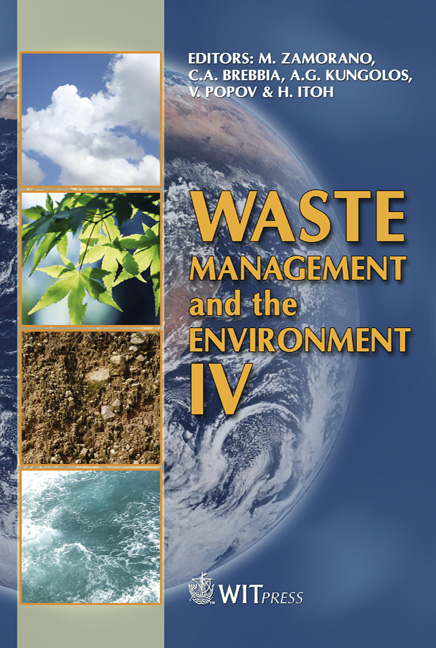The Minimization Of Wastes Produced During The Treatment Of Arsenic Contaminated Drinking Water
Price
Free (open access)
Transaction
Volume
109
Pages
9
Page Range
719 - 727
Published
2008
Size
862 kb
Paper DOI
10.2495/WM080731
Copyright
WIT Press
Author(s)
P. Sylvester, T. Möller & O. Boyd
Abstract
Arsenic in potable groundwater is a major concern in the United States and many remediation strategies are being utilized to reduce arsenic levels to below the Environmental Protection Agency’s maximum contaminant level of 10 µg/L. The most popular technology is adsorption, where the arsenic species in the groundwater are adsorbed onto a solid metal oxide phase which is ultimately disposed of directly into a landfill. Standard adsorptive media are generally not regenerated due to poor mechanical strength and huge volumes of solid waste are generated annually, typically with arsenic contents of a few milligrams per gram of material. These wastes, which usually pass the Environmental Protection Agency’s (EPA) Toxic Characteristic Leaching Procedure (TCLP), are disposed of as non-hazardous wastes. Recent research has indicated that the adsorbed arsenic is mobilized under reducing landfill conditions and can migrate back into the groundwater supply. Consequently, the current method of disposal of large volumes of arsenic-bearing wastes may have a major environmental impact in the future. This paper discusses the advantages of regenerating a more durable iron-based adsorbent media using a strong caustic solution to strip and concentrate the arsenic in a small volume of liquid and return the media to service. The stripped arsenic is then precipitated to generate a much smaller volume of solid and disposed of as a hazardous waste. This greatly reduces the total volume of solid waste generated during the arsenic treatment process. Keywords: arsenic, drinking water, landfill, adsorption, regeneration, solid waste disposal, TCLP.
Keywords
arsenic, drinking water, landfill, adsorption, regeneration, solid waste disposal, TCLP.





